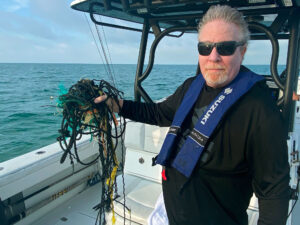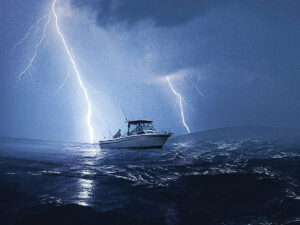Mention bottom fishing, stiff rods, and heavy line, and oversize hooks quickly come to mind. But when tarpon, jacks, grouper, snapper, and stripers are feeding on or near the bottom, you can take them on fly gear – if you employ a few special strategies. One key is to use a shooting head, a 20′-to-30′ length of fly line designed to sink rapidly. On my 12-weight fly rod, I have a 30′ 550-grain head that’s been spliced to 60′ or 35-pound braided mono running line. For a lighter rod, such as a 9-weight, trim back the shooting head by 6′ to make it more castable.
Fluorocarbon leader is a good choice, since it combines abrasion resistance with low visibility. Using blood knots, tie up a 3′ butt section of 40-pound test knotted to a 2′ section of 25-pound test, a 1’4″ section of 20-pound tippet, and finally, a foot?long shock leader of 40-pound test.
Depths beyond 20′ are tough. But casting downcurrent from a drifting boat will allow your fly to sink deeper. Start with one slow strip and increase the speed and length of each successive strip. When the fish hits, exert maximum pressure and give line grudgingly, if at all. If you survive the first run without pulling the hook, breaking the fish off, or having it dive into a ledge, it’s time to work the fish back to the boat. The trick is to establish some momentum and keep the fish heading toward you. If you weren’t lucky enough to stop the fish in the first place and it’s “all rocked up,” try backing off the pressure. Often, the fish will swim free and you can resume the fight.









